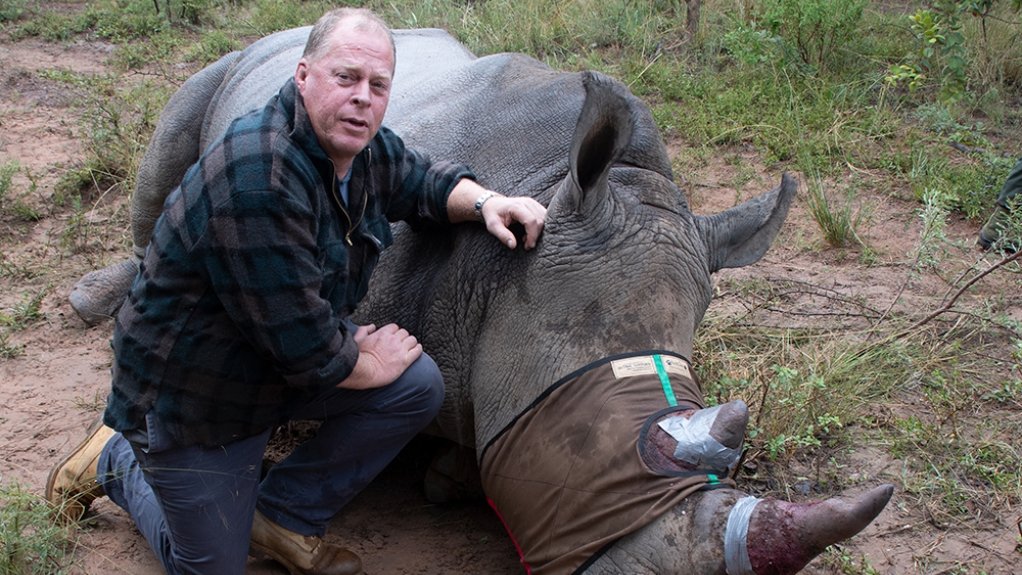Beckham, a 1.7 t rhino named after the English footballer, on Tuesday had a radioactive pellet drilled into his horn as a program to discourage poaching of the endangered animals in South Africa scales up.
The Rhisotope Project, which is being run by Johannesburg’s University of the Witwatersrand, is just one of a number of ways ranging from staining horns with dye to cutting them off that conservationists in the country with the world’s biggest rhino population are seeking to protect the animals. It has the added advantage in that horns implanted with the pellets could be detected as they pass through borders, airports and harbours.
The aim of the project, which this week installed the pellets in the horns of a large group of rhinos for the first time at an orphanage for the animals a three-hour drive northeast of Johannesburg, is to make them unattractive to poachers. Since 2008 more than 10 000 rhinos have been killed illegally in South Africa, their horns sawn off and sold illicitly in east Asia where they are displayed as a sign of wealth, given as gifts and are erroneously thought to cure cancer.
“If we can get to that position where we make the horn significantly less attractive, significantly less valuable, then hopefully these animals get to live and breed,” said James Larkin, a professor at the University of Witwatersrand who founded the project, as he operated a drill with rhinos being sedated before having the radioisotopes inserted and then being brought back to consciousness.
While projects such as Rhisotope aimed at protecting the animals have proliferated in recent years, the number of rhinos killed by poachers in South Africa rose to a four-year high of 499 last year. That’s left about 22 500 rhinos, of the white and smaller black variety, across Africa, of which 79% live in South Africa, according to government statistics.
The dose levels are only slightly higher than naturally occurring radiation and will not harm the animals, according to the project’s website. Still, buyers could fall ill if they consume enough of the horns.
The fact that the horns can be picked up by the more than 11,000 radiation detection monitors that have been installed at ports of entry globally could aid an otherwise limited number of border officials trained to detect wildlife trafficking.
The Rhisotope Project started up in 2021 when it injected harmless stable isotopes into the horns of two animals named Denver and Igor. At the time some of its support came from Russia’s state-nuclear company Rosatom. The program took a decision to end its relationship with the company after the war in Ukraine broke out, said Jessica Babich, a conservationist involved in the program.
The program is now searching for more funding from investors and donors and may sell shares in the project.
If the 20 rhinos injected with the radioisotopes this week are healthy in six months' time the service may be rolled out commercially at a cost of 24,000 rand ($1,317) per animal or less if larger groups are treated, Babich said. The radioisotopes in the horn need to be “topped up” after five years because it will grow and the radioactive half-life of the material weakens.
And, Larkin said, it’s preferable to cutting the horns off, an increasingly common way of combating poaching.
“Nature doesn’t waste energy growing something on the head of an animal if it doesn’t need it,” said Larkin, who has served as chairperson of the International Atomic Energy Agency.
EMAIL THIS ARTICLE SAVE THIS ARTICLE
To subscribe email subscriptions@creamermedia.co.za or click here
To advertise email advertising@creamermedia.co.za or click here











